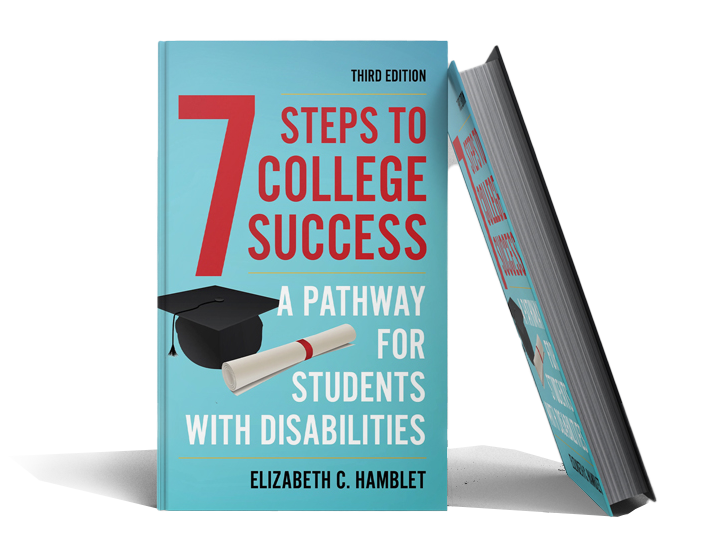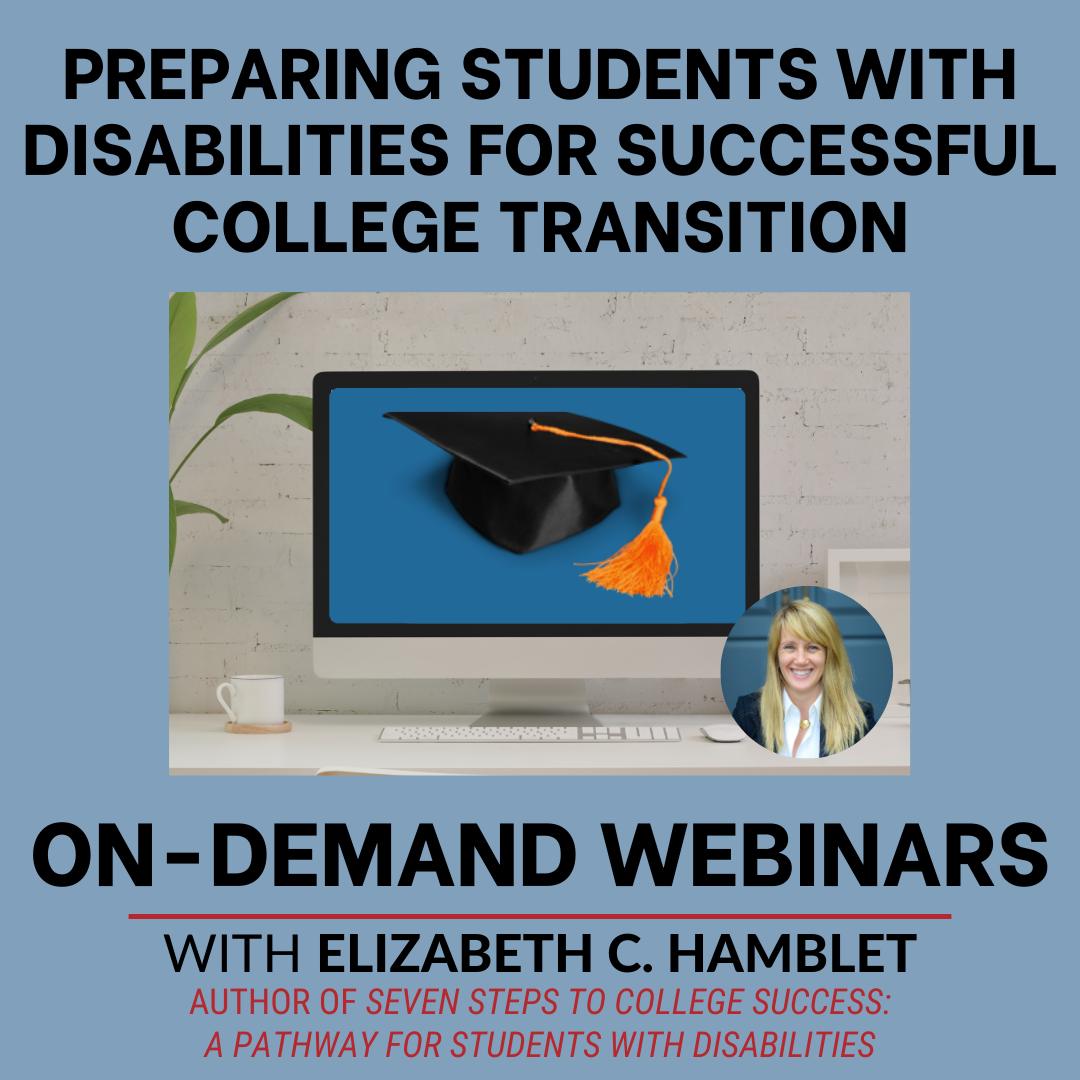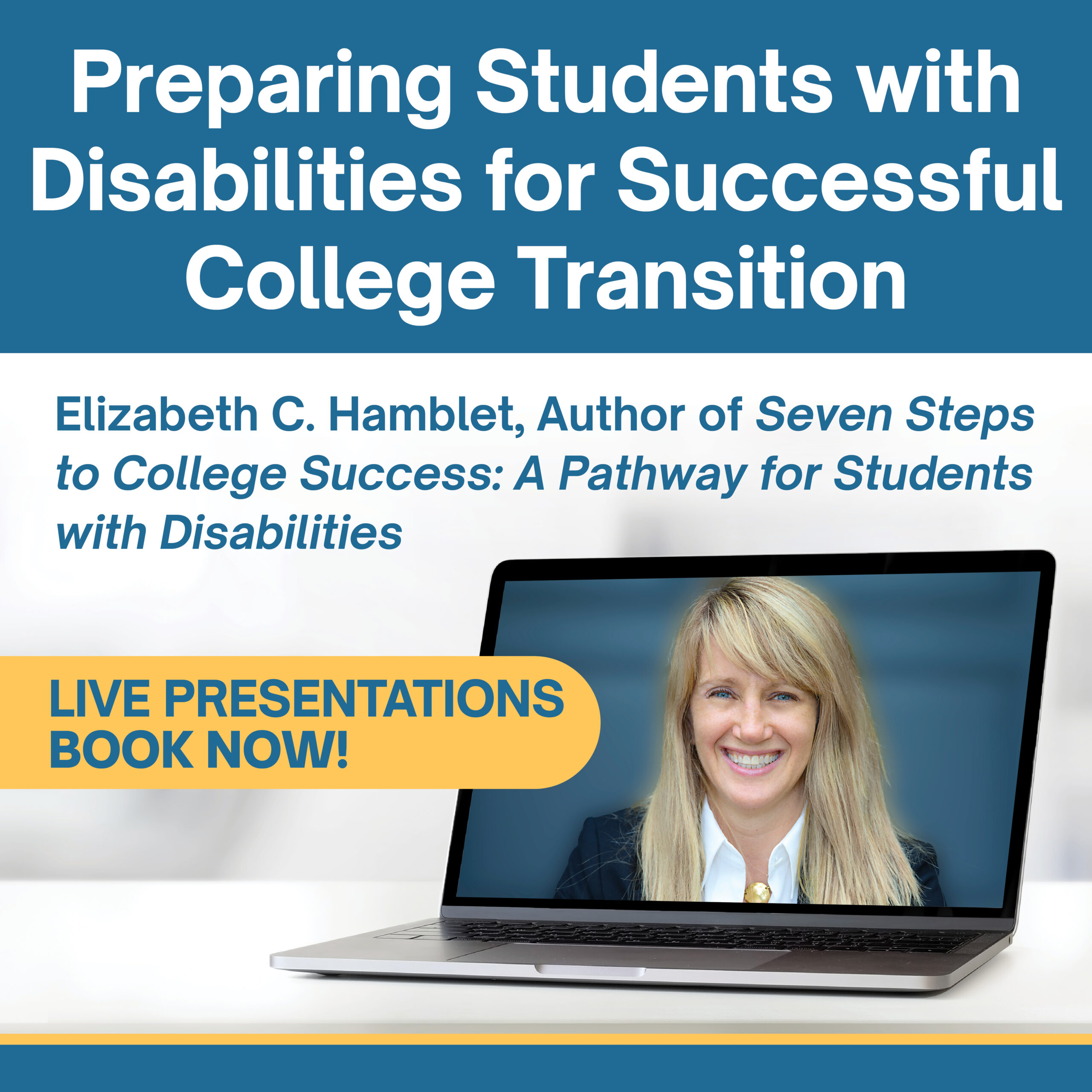Introduction
Research shows that the students with disabilities who are successful at college are often those those who have received direct, deliberate transition preparation. When I was developing my second book, I spoke to Ashley Carls, a special education teacher who created and teaches a credit-bearing post-secondary preparation class using a curriculum of her own design. Carls’s approach integrates academic skills into a class centered on transition. High school professionals working in transition will find that Carls has great ideas and covers so many important skills in preparing students for college success.
Using the College Application as a Teaching Tool
I embed practical skills into my curriculum. For instance, I incorporate the college application process into my class, assigning students to write their college essay and compose a letter asking a teacher for a recommendation letter. In addition, they complete scholarship applications and financial aid forms.
Teaching Students About Their Rights
Some lessons focus on students’ disability rights and responsibilities in the college environment. My students research key concepts such as FERPA, ADA, and FAPE to present their understanding to the class as a whole. I want students to be able to advocate for themselves once they enter the post-secondary environment, and understanding the law is a solid base to build upon these skills.
Developing Important Academic Skills
My students also develop the fundamental academic skills needed for college success. They learn time management skills by working on long-term papers and projects. I provide a checklist they can use to stay on track, checking in with them only at the mid-point before the due date. I also try to get them used to coping with a heavy reading load by using strategies that improve their comprehension, asking a lot of “why” questions to help my students understand that not all answers are bold-faced and pointed out to them in a book. To get them ready for lectures, I directly teach notetaking and summarizing skills. And I push my students to advocate for themselves by communicating with teachers by teaching them appropriate ways (and times) to email and have discussions with teachers in order to get extra help or inquire about an assignment.
Teaching Social Skills
Because the college environment involves nonstop social interaction, my students work on social skills through group work and positive interactions with their teachers. I want them to get comfortable doing what will be expected at college, such as forming a study group or get notes when they have had to miss a class. At the same time, I maintain a certain amount of formality in my relationship with them to help students develop their social skills and understand how to communicate with peers and authority figures.
Readers interested in learning more about Ashley Carls’ curriculum can contact her at acarls@ottawahigh.com.




